Around noon I passed over the creek and my heart dropped, visibility looked to be less than an inch. I debated just turning around and hitting a small state lake instead. However, lately I've been itching to get back onto flowing water so I made up my mind that I was going to float the creek regardless of poor clarity. Once I arrived at the launch location I realized that the water clarity was closer to 6"....which wasn't so bad. It meant that finding fish was going to be a little harder since I would have to bring the bait within a foot of their face, but it was a risk I was willing to take. I hit the water around 12:30, and for the first hour I went without a bite. I started with the rage craw and began dragging/swimming it across the bottom but the fish didn't seem interested. I then made the switch to the Shad Rap and began banging the crankbait off of rocks. A half dozen casts after the bait switch I got hammered. I knew immediately that it wasn't a smallmouth, the fish pulled to the bottom and began rolling violently. I grabbed the net, landed the small channel, and snapped a picture for our kayak war tournament.
Now it wasn't what I was looking for, but I was sure glad to have it. About 30 minutes later I approached my first really fast rapid. Here the creek made a 3-4 foot drop over 20 yards, since the water was high it was very swift. I took the inside of the rapid, avoiding the raging white water on the outside bend. I bumped a couple rocks and used my paddle to maneuver, but I eventually made it to the slack water at the bottom. I bottomed the yak out on a big rock and begin casting into the white water on the outside bend. On the first cast I get hammered, the kind where your reeling the crankbait and the fish grabs it so hard your drag goes off before you can even react. A few seconds later a 14-15" smallie leaps out of the water. I leaned up to get the net and my line went slack. I reeled in the shad rap and inspected the hooks....they were all super sharp and none of them were bent so I made another cast. I took no more than two cranks before I got hammered again. This time around the fish wouldn't get off. It was a small 16" freshwater drum...once again good enough for kayak war points.
I worked the fast moving water for another 20 minutes without a bite before moving on. After the rapid I worked a long section of rather deep and slow moving water. There didn't seem to be much activity in this section of river, well except for one species of fish.
I found a few gar sitting in the shade of an overhanging tree and I tossed them a rope lure. At first none of them seemed interested, but then I ran across a slightly bigger gar sitting off of the bank all by himself. I tossed the rope lure on the bank and pulled it right over his nose and he hit it. At this point I dropped the rod and waited for him to start thrashing (tangle his teeth in the lure). After 5 seconds I began to add pressure and he went nuts.....just what I needed to wrap him up. After a couple minutes I brought him into the yak and began removing the rope lure. Typically I use my fish grips to clamp their mouths open, but after that channel cat fiasco last winter I was left without a pair. I searched around the yak and found half of a float that I used on my camera to keep it from sinking to the bottom. I opened the gar's mouth, placed the Styrofoam float in the back of his mouth, and went to work untangling the rope lure.
After a minute or so the gar was free to go. At this point I began searching the shade under trees for gar, but the clouds would soon put a damper on my gar fishing. After an hour of bouncing back and forth between banks, looking for gar, I decided to break out the shad rap again. Eventually I came up to my next major rapid. I took the slowest moving path and positioned myself in the slack water below. I made a cast and began bouncing the shad rap off of the rocks below the rapid. A dozen casts later I found myself getting caught on larger rocks. Once I got caught I let my line go slack and my crankbait would float up and out of the snag, and then I'd begin reeling again. One one cast I got hung up and I dropped my rod tip to let my crankbait float up when I got hammered. The fish immediately broke the surface and went airborne and it was a nice fish. It was definitely big for this section of creek, in fact it would turn out to be the largest I've seen out of this creek in the last five years. The fish made another jump a few feet from the kayak, and my heart began to race. I knew with each jump his chance of escaping grew tremendously. I leaned forward to get the net and it caught on my other rod. I didn't have time to untangle the rod and net so I threw the net over board, rod still dangling from the net, and maneuvered the smallie into the net. Fortunately, I landed both the smallie and my other rod.
I released the fish and paddled back up to the riffle. There I landed an additional two smallmouth in the 12-14" range. At this point I knew that I had a pattern developed, these fish were sitting below fast moving water. This was surprising to me because typically I had thought that catfish move to the banks where the water is slower moving when the rivers begin to rise. Using this theory we had found a lot of success, but it seems that fish may be more complicated than I had imagined. With my new pattern I began paddling through the flat water and just focusing on faster moving water. There was no doubt that these fish where in the fast moving water. At every riffle/rapid I hooked and landed 3-4 fish, surprising mostly freshwater drum and channel cats. Below one rapid I made a cast and felt my crankbait banging off of bottom and then my drag went off, but the fish didn't get hooked, on the same retrieve after the missed fish I hooked yet another fish. (or possibly the same fish) On the next three casts I landed a channel cat. The biggest of which was a 21.5" brute.
The sun began to fall over the tree tops and I realized that I still had at least a mile of water to cover, and there were several riffles to go yet. At this point I began to pick up the pace, and I even limited myself to 5 casts per riffle. On one of the last riffles of the trip I casted across current at the top of the riffle and began banging my shad rap off of the rocks. I made my way through the current to the slack water in front of me when I got slammed. The fish leaped out of the water with less than 15 feet of line out. I grabbed the net and landed yet another decent smallmouth.
This fish would be the last fish of the trip, as both a storm and darkness forced me off the water. It was just one of those trips you wished wouldn't end, I had the fish figured out and they were willing to feed.....all I needed was a little more time.

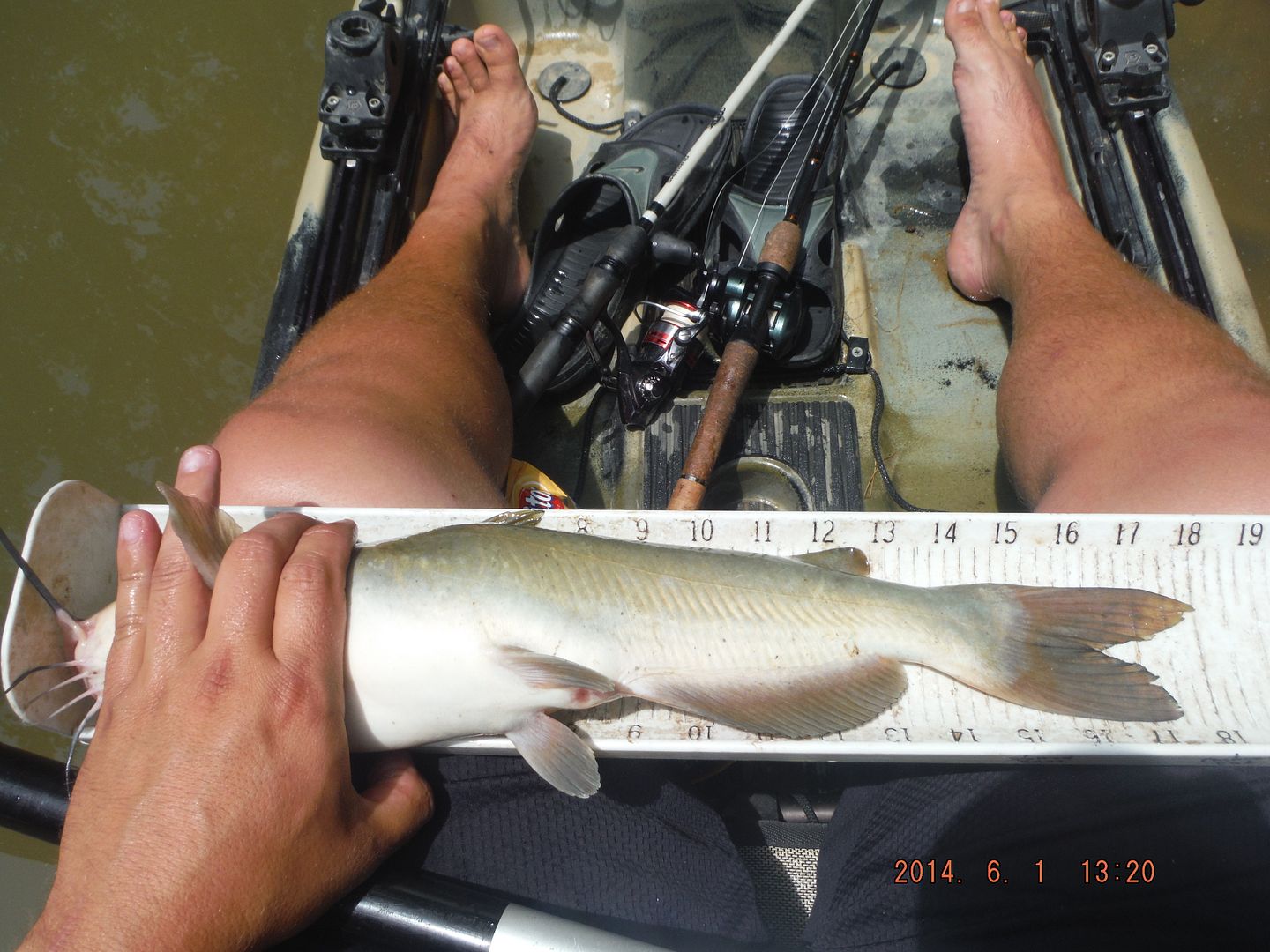
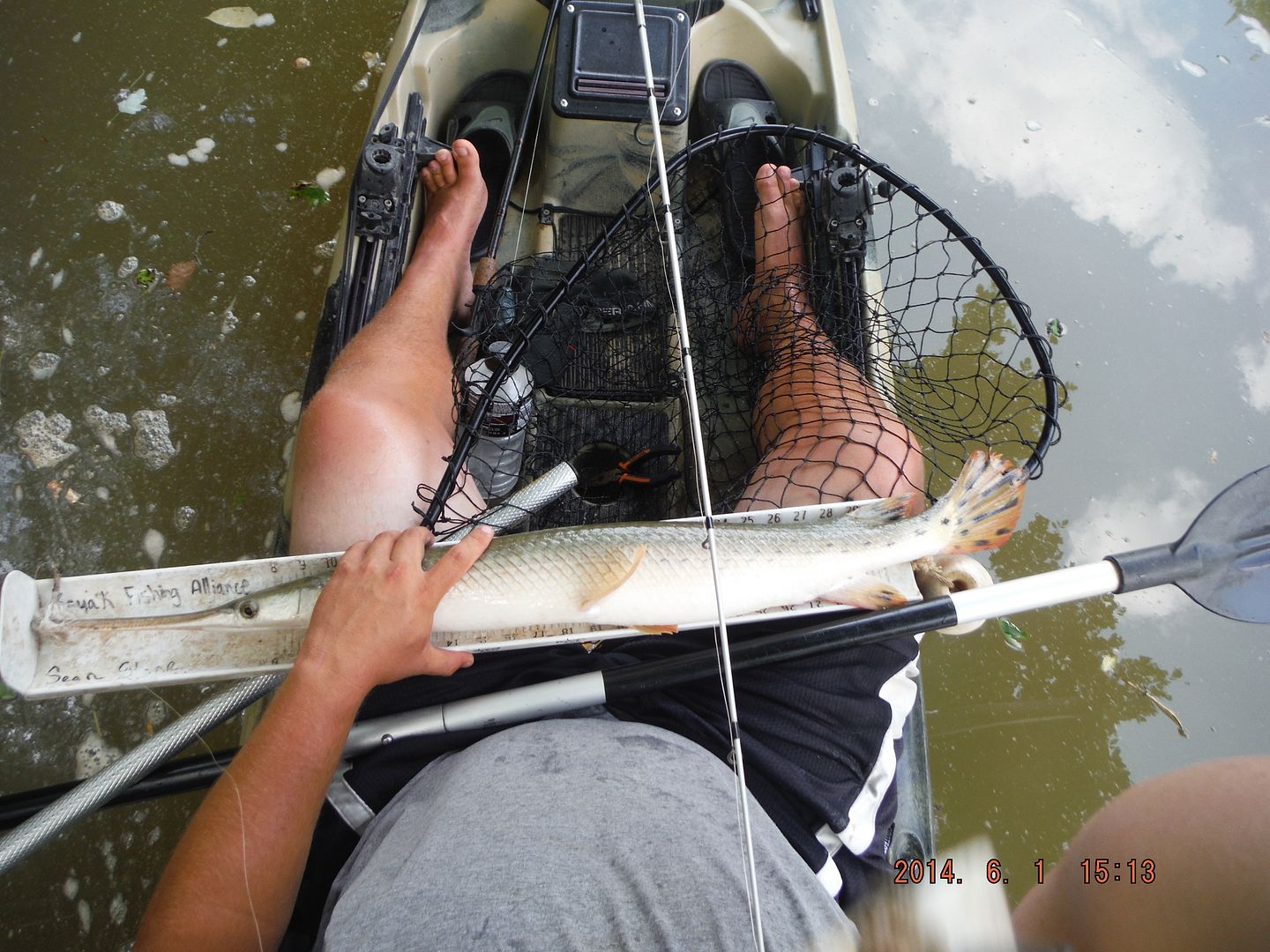
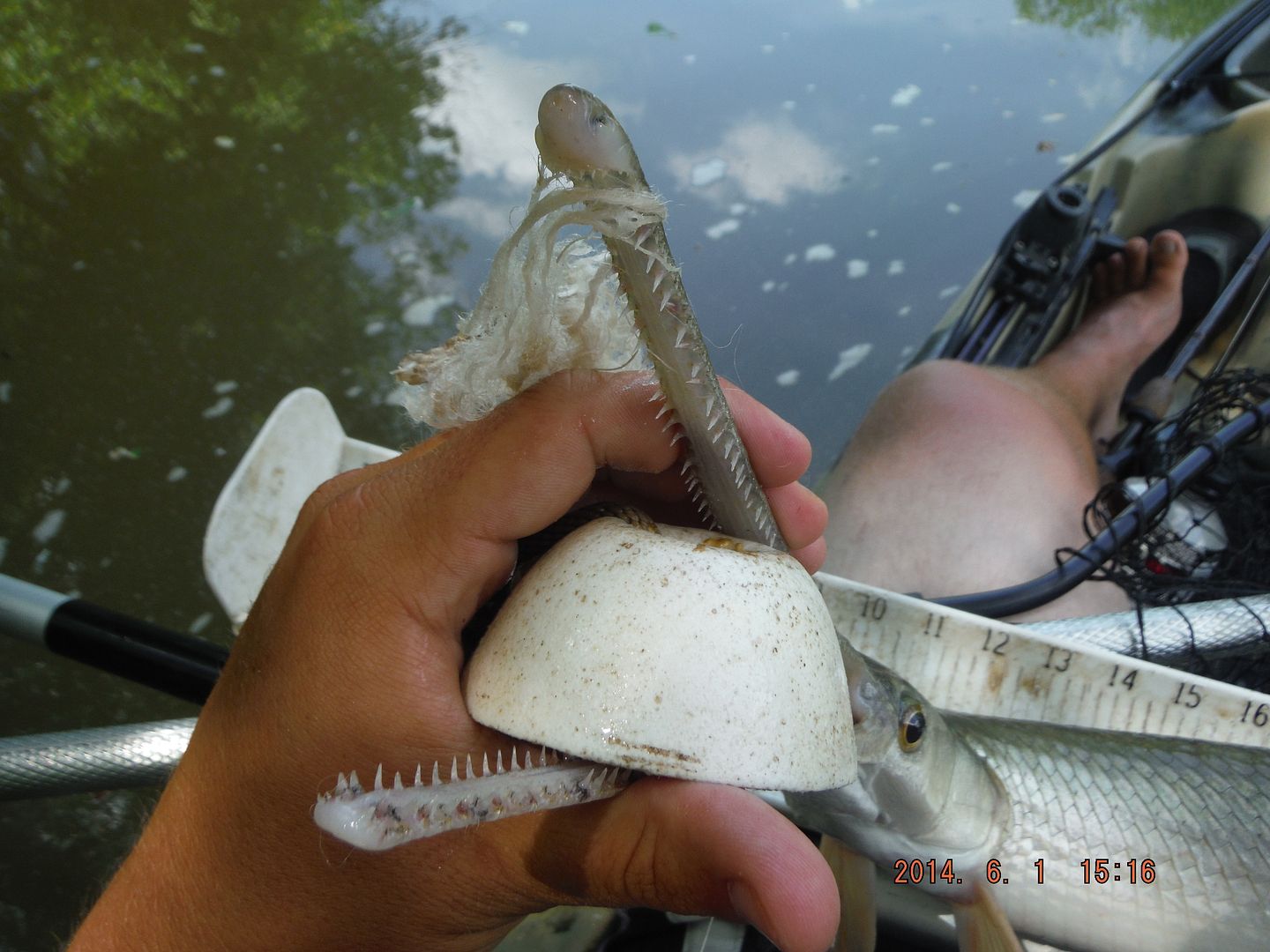
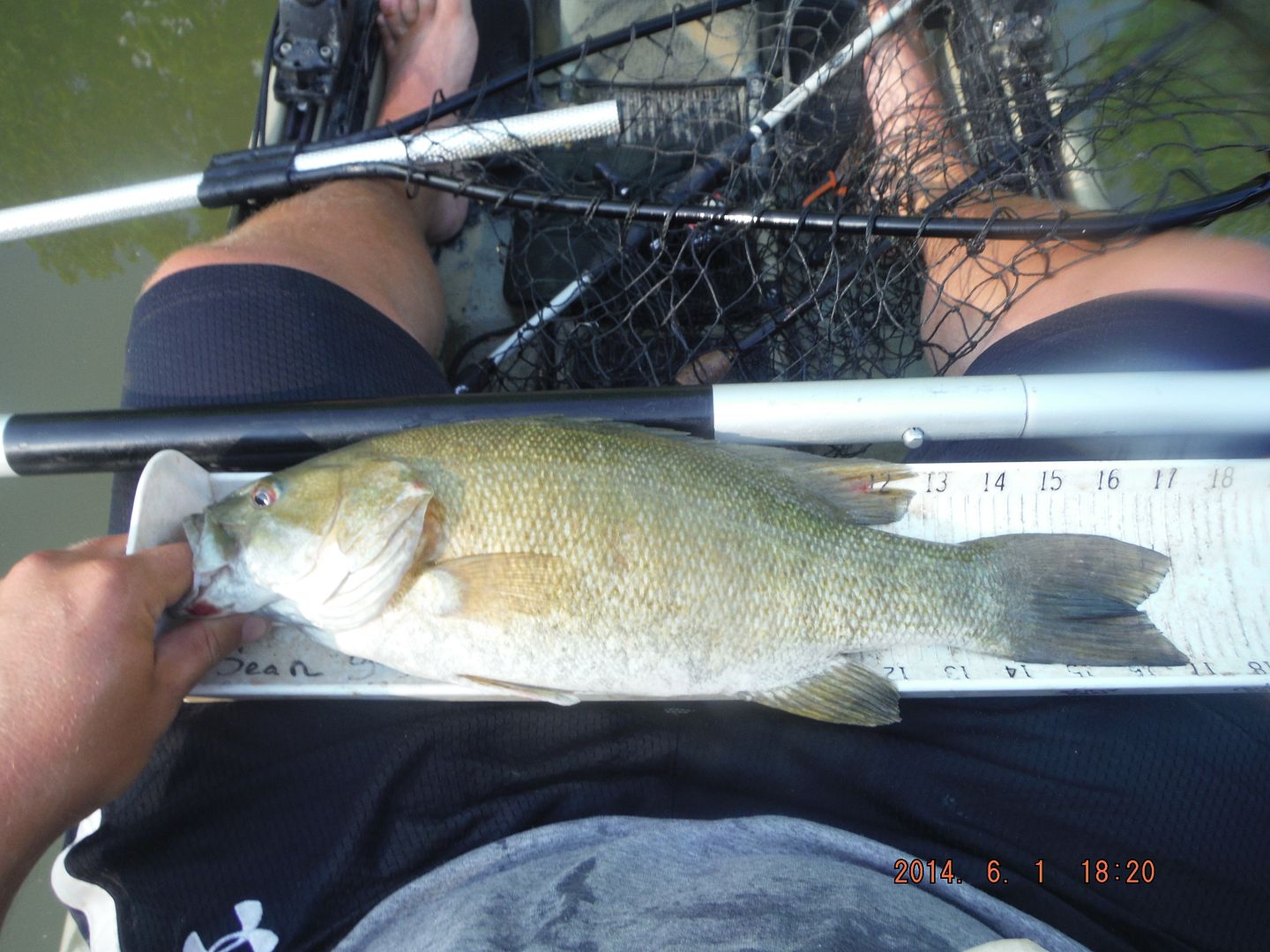

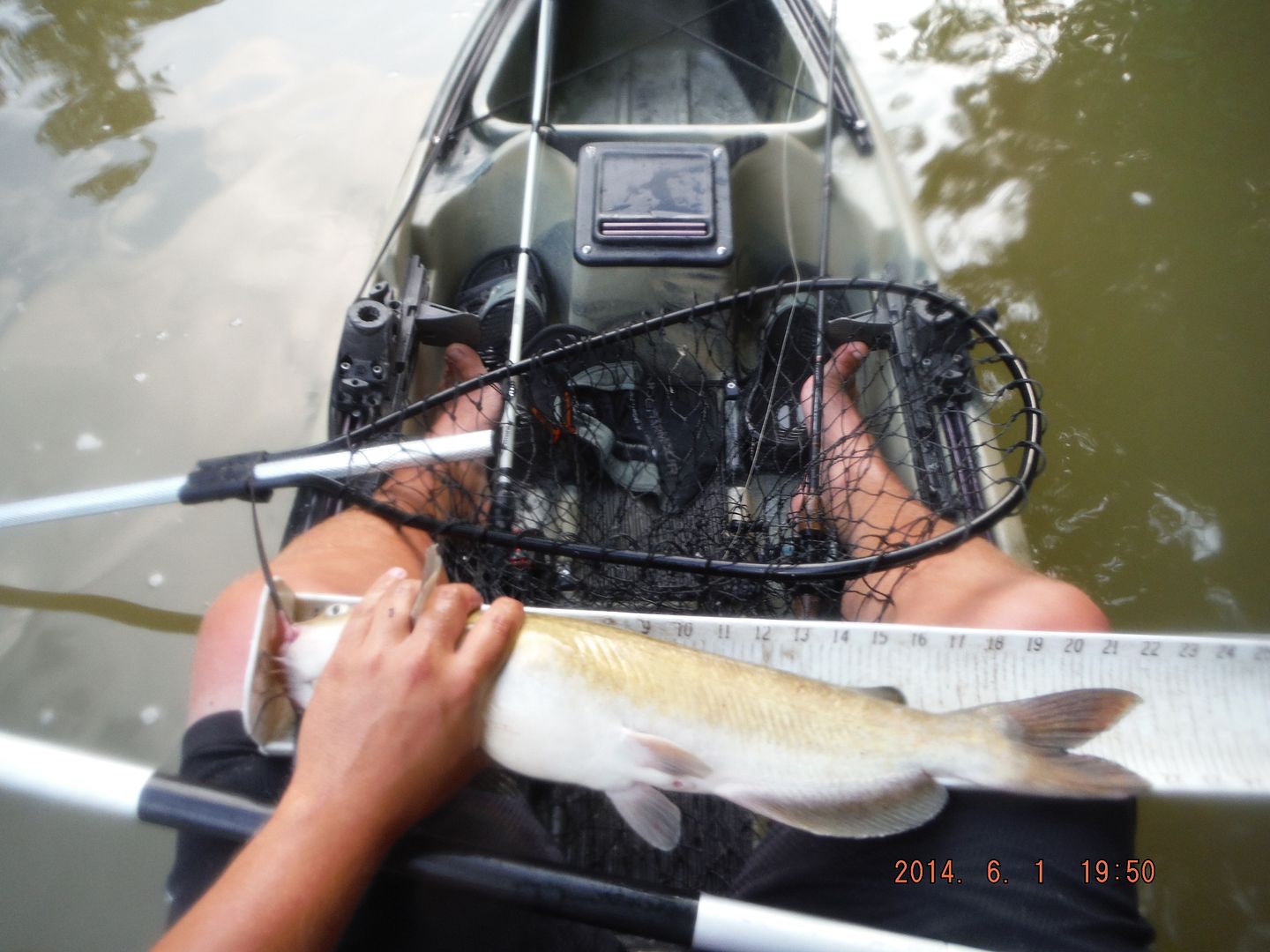
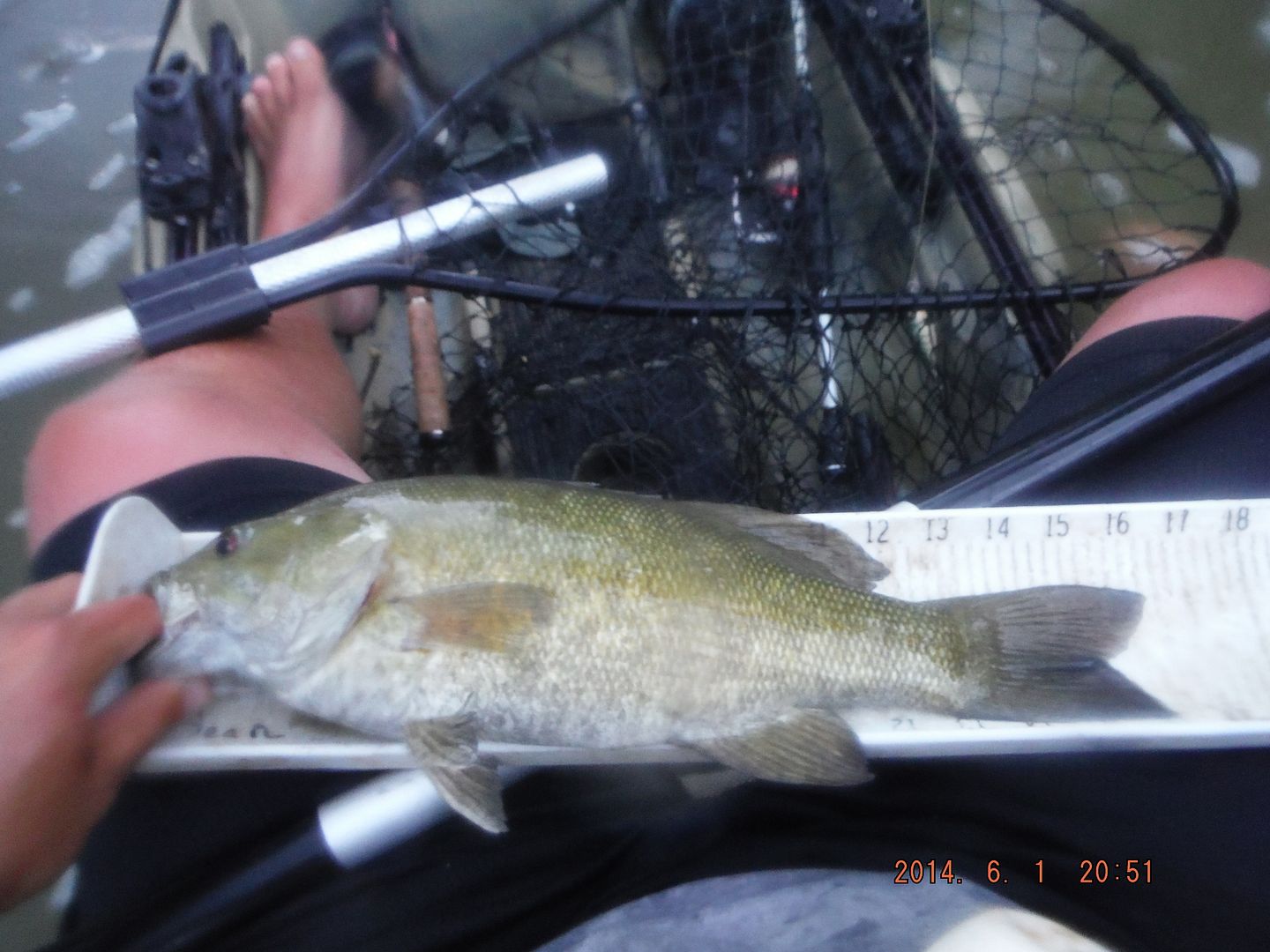
Nice job old buddy
ReplyDelete